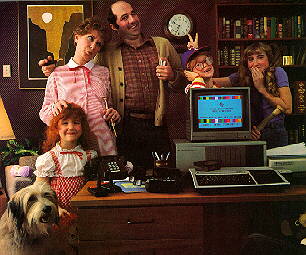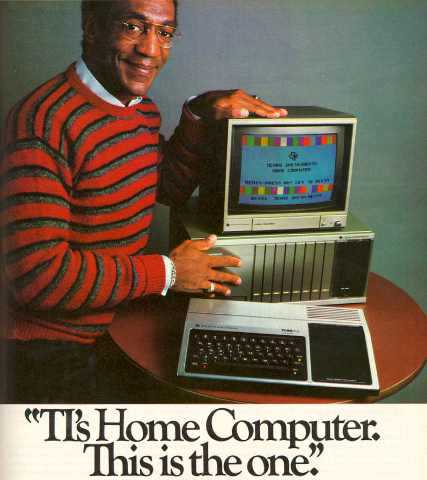|
|---|
History of Texas Instruments' Computers |
- 1954: Texas Instruments produces the first commercial silicon transistor.
- 1958: TI engineer Jack Kilby co-invents the integrated circuit.
- 1964: Texas Instruments receives a patent on the integrated circuit.
- 1967: TI develops the hand-held calculator.
- 1971: TI develops the first microcomputer-on-a-chip, containing over 15,000 transistors.
- 1976: June - Texas Instruments introduces the TMS9900, the first 16-bit microprocessor
- 1979: June - TI introduces the TI-99/4 personal computer.
- 1979: November - TI begins shipping the TI-99/4.
- 1980: January - Production problems haunt TI-99/4 for the first few
months of 1980 and TI is selling fewer than 1000 units per month.
- 1980: TI introduces a 5 1/4-inch mini-floppy disk drive for the TI-99/4. It can store up to 90KB per disk.
Price for controller is US$300; price for disk drive is US$500.
- 1980: TI introduces a 300 baud modem for the TI-99/4 for US$225.
- 1980: TI introduces a thermal printer for the TI-99/4. It produces 5x7 dot matrix characters, at 30 CPS,
on 3 1/2-inch thermal paper. Price is US$400.
- 1980: TI introduces an RS-232 interface for the TI-99/4. Price is US$225.
- 1981: June - The new and improved TI-99/4A Home Computer is unveiled for $525.
- 1982: January - TI introduces a Peripheral Expansion Box for the TI-99/4A for $250. Expansion cards are approximately $300 - $500 each.
- 1982: February- Unsatisfied at Texas Instruments, three engineers (Rod Canion, Jim Harris, Bill Murto) leave and
form Compaq Computers, to build the world's first true IBM clone, the
Compaq Portable. It was an incredible success.
- 1982: June - TI hires Bill Cosby as the ad campaign spokesman for their Home Computer. It costs TI $1 million a year.
- 1983: January - TI announces the TI-99/2.
- 1983: March - Texas Instruments introduces the Compact Computer 40 (CC-40). It runs on four AA batteries, lasting up to 200 hours.
- 1983: June - TI drops plans to market the TI-99/2.
- 1983: June - TI releases the plastic beige console version of the TI-99/4A.
- 1983: July - TI ships the 1 millionth TI-99/4A.
- 1984: January - TI has sold 2.5 million TI-99/4As.
- 1984: March - TI gives-up and drops-out of the home computer market altogether.
Source:
Chronology of Events in the History of Microcomputers
and
TI-99 Home Computer Timeline by Bill
Gaskill
| |
|---|
|


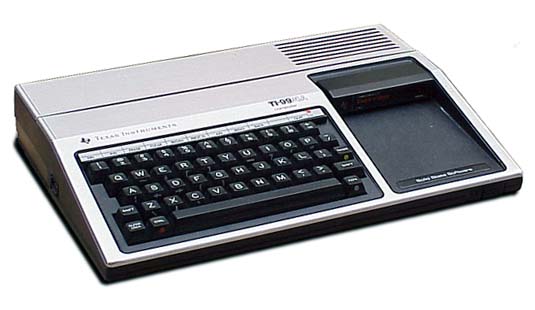

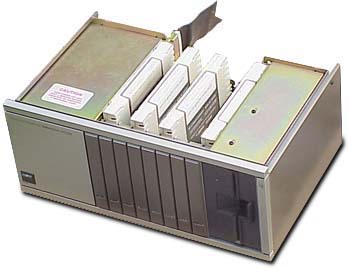

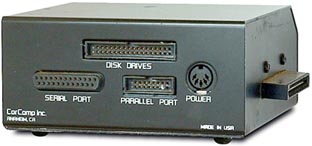
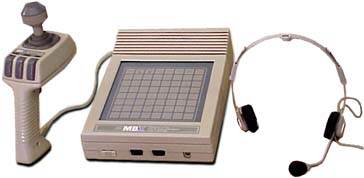 At about the same time, Milton Bradley announced the futuristic Milton Bradley Expansion System (MBX)
for the TI-99/4A. It not only offered speech synthesis, but speech recognition, when used with specific
Milton Bradley cartridges.
At about the same time, Milton Bradley announced the futuristic Milton Bradley Expansion System (MBX)
for the TI-99/4A. It not only offered speech synthesis, but speech recognition, when used with specific
Milton Bradley cartridges.
